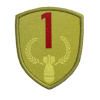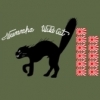Leaderboard
Popular Content
Showing most liked content on 05/04/2022 in all areas
-
8 points
-
7 pointsSitRep: I created the lakes in the north and east of the Crimean Peninsula all by hand. It was a time consuming job, but neccessary, because the raw data were wrong at this area. Now i'm laying the tiles for the road network of the Crimean Peninsula. An other boring and time consuming task. But so is terrain making!
-
4 points
-
4 pointsThese last skins will cover the SF2NA Expansion Pack , Med Crisis and North Cape . Note that some Squadron will cover different cruises Part one
-
3 points
-
2 points
-
2 points
-
2 pointsYes mate , only the CAG and is indicated like StripeL000 and StripeR00. one of the few things I learned in these year in the community!
-
2 pointsThanks mate and thanks to 1977Frenchie I'm succesful with the CAG stripe. the only ( minor) issue is how the stripes join in the upper fuselage, will be in a arrow-shape and I0ve a rounded one, but I'm very happy after all!!! Line plane
-
2 pointsMade it as a decal as i did for my E-2C skins [DecalXXX] MeshName=nose DecalLevel=0 DecalFacing=RIGHT FilenameFormat=E-2C/VAW115/stripeR Position=4.05,0.40 Rotation=100.0 Scale=2.8 DecalMaxLOD=2 [DecalXXX] MeshName=nose DecalLevel=0 DecalFacing=LEFT FilenameFormat=E-2C/VAW115/stripeL Position=4.05,0.40 Rotation=80.0 Scale=2.8 DecalMaxLOD=2 stripeL.tga stripeR.tga
-
2 pointsSolved mate thanks, I've tried already but don't work as I don't draw enough to the right... Finished this skin.
-
2 pointsAs always my modding goes sideways...but there is small progress. basic T-55 ZPU-4 in North Vietnam.
-
1 pointI wrote a tool that someone may find useful: a LOD viewer. I tested it on Windows 7 and 8. Unfortunately it doesn't run on Windows XP. From the readme.txt: LODViewer Version 0.1 Author: mue Use at your own risk. The program is free for personal, non-commercial use. Usage: LOD files are loaded with File->Open... The program also tries to read the ini file with the same basename (eg. tank.lod -> tank.ini) for textureset information. The texture directory can then be selected via the texture directory combo box. If no ini file is found or it does not contain textureset information then the texture files are assumed in the lod file directory. The left upper window shows the node structure: node names and material ids. Nodes can be selected with left click and deselected with ctrl+left click. The lower left window shows the texture file names of the materials. The right graphic window displays the 3D view of the lod object. The view can be manipulated with the mouse: rotation: left click + move translation: right click + move zoom: mouse wheel reset view: middle click Nodes can be selected with ctrl+left click, and deselected with ctrl+left click on a blank area. Selected nodes are highlighted in red. Nodes whose texture couldn't be read are displayed in green. Known issues, missing features, bugs: -simplistic lighting (no specular, glossiness, reflection, bump mapping,...) -no transparency -no decals -problems with reading some tga files Screenshot: (Download link temporarily redacted)
-
1 pointYou will love it when they release FC.2 and FC.3 combined into one huge map
-
1 pointFirts, thanks to all. Frenchie, also mine is a decal but 'till now was unable to put in good use, hope can follow your example. I done a markings for a lot of Squadron in order to cover some of the mods we have here, maybe I can release very soon
-
1 point
-
1 pointThanks Eric, but I've a problem with the VAw-121 CAG plane. as I can't figure out how do the stripe around the forward fuselage... The real plane here, scroll down to the 2012 cruise pics And what I obtained at the moment. Any help will be more than appreciated!!!!
-
1 point
-
1 pointhe's having to take a break for now. i have a few wishes too, but health is abit more important
-
1 pointThe terrain has the size of 1.200 x 1.200 km. It should have nearly real life size. A square on planning map has a size of 120x120 km. At a first step i will finish the Crimean Peninsula and the naval area. Then i will release it as a Beta. In the next step i will add the rivers Don and Donez and some towns and villages in the area. Then in a further step the river Dnepr with the Cherson area, then Mykolajew and Odessa.
-
1 pointGotcha. Hope it works out. Is the Crimea/South Ukraine/Russian coast going to be a large map? It looks really compressed by the squares and such.
-
1 point
-
1 point
-
1 point29 April 1975: VNAF C-130A takes off from Tan Son Nhut with 452 pax bound for Thailand
-
1 point
-
1 point
-
1 pointThe Battle of France that began on May 10th, 1940 gave Shah Mushani of Paran the perfect opportunity to invade the Kingdom of Dhimar without interference from France and the United Kingdom who were now massively distracted by the war on the western front. Despite this distraction, Shah Mushani waited until the Italian invasion of France on June 10th to launch an all-out attack on Dhimar led by his trusted General Halani Khomar. Supported by the Parani Army Air Force, Khomar's 1st and 2nd Armoured Divisions swept north and west reaching Najahafi on June 14th. Flying from the P2 forward airfield the Parani Army Air Force's Mitsubishi Ki-15P monoplane scout bombers were particularly effective, being considerably faster than the Dhimari Gloster Gladiator fighters and able to deliver their relatively light 250kg bomb load with great accuracy. It was only the introduction of ex-RAF Hawker Hurricane Mk.I's in Dhimari service in October 1940 that saw the Parani Ki-15P's require fighter escort. Skin Credit: Charles The terrain is Gepard's new Socotra - a lovely play box!
-
1 point17 Dec 1947 first flight of SACs most numerous bomber, the B-47 Stratojet
-
1 pointBristol Beagle Mk.II - No.29 Squadron, RAF Fighter Command, 1938 After a poor start the Bristol F.2 'Brisfit' reconnaissance-fighter was successfully developed into the robust and manoeuvrable F.2B two-seat fighter - an aircraft capable of holding its own against most single-seat fighters during the latter part of WW1. In the immediate post-war period the aircraft was further developed into the F.2B Mk.II equipped with desert equipment and a tropical cooling system for army co-operation and air policing duties. During the 1920's Bristol developed and introduced numerous variants and derivatives of the aircraft with revised tail units and strengthened undercarriages. Even after production finished in 1927, Bristol enjoyed several years of manufacturing spares and refurbishing the aircraft for continued service into the 1930's. In late 1927, as a private venture, the board of the Bristol Aeroplane Company asked their chief designer Frank Barnwell to design and develop a multi-role successor to the F.2B for the decade ahead - naturally stipulating that the new aircraft should use an 'in house' Bristol engine. Barnwell was aware that Roy Fedden was working on the nine-cylinder Pegasus radial engine as a follow-on to the successful Jupiter engine but using a shorter stroke to increase the revolutions per minute and including a supercharger for added power. On the expected power output of the Pegasus engine (635h.p.) Barnwell schemed a much larger aircraft than the F.2B with a near doubling of the all-up weight to 5,600lb making the new aircraft suitable for a variety of roles such as light bomber, reconnaissance-fighter, army co-operation and night fighter. Designated as the Bristol Type 119, Frank Barnwell designed a single-bay biplane with staggered wings braced by wires in the centre section only. The fabric-covered fuselage was of metal construction using members built up from rolled high-tensile steel strips riveted together and essentially similar to the earlier Bristol Bulldog single-seat fighter. The Pegasus engine installation was neatly cowled with a Townend ring. Under the fuselage the strong undercarriage was divided and attached to the fuselage with streamlined legs and struts. The pilot's cockpit was positioned below a shallow cutout in the trailing edge of the upper wing with the observer's cockpit positioned behind the pilot and featuring a twin Lewis Gun installation mounted on a Scarff ring. Bombs could be carried on three external hardpoints under the fuselage and the lower wings carried a pair of podded .303 Browning machine guns that were belt-fed with 400 rounds per gun. Development moved swiftly and the first prototype took to the air at Filton on January 18th, 1931 piloted by Cyril Uwins. Bristol's bold private venture investment soon paid off with almost immediate Air Ministry interest in the Type 119 during the Spring of 1931 soon followed by an order for 90 Type 119 aircraft to the specially created Air Ministry Specification G.3/31 calling for a two-seat general-purpose light bomber. These were manufactured as the Bristol Beagle Mk.I and entered service with No.35 Squadron at Bircham Newton in April 1933. As an almost parallel programme, Bristol were awarded a contract for 60 aircraft to the new Air Ministry Specification F.6/31 calling for a two-seat general purpose fighter and these were manufactured as the Bristol Beagle Mk.II differing only in the deletion of the three external hardpoints. Entering service with No.29 Squadron in June 1933 the Beagle Mk.II's also served with No.64 Squadron as Home Defence night-fighters and were still in service at the time of the Munich Crisis in September 1938. Skin Credit: Monty CZ
-
1 point
-
0 pointsI lost contact with AngelP, he does not answer to my mails or cell calls, I hope he's ok, but regarding the mod, without his permission the release is a no-go.
Important Information
By using this site, you agree to our Terms of Use, Privacy Policy, and We have placed cookies on your device to help make this website better. You can adjust your cookie settings, otherwise we'll assume you're okay to continue..








.thumb.jpg.59620c8c4aa98fa7c534cd0857dc3574.jpg)
.thumb.png.10f5a343d561955039ace25197428ad6.png)










